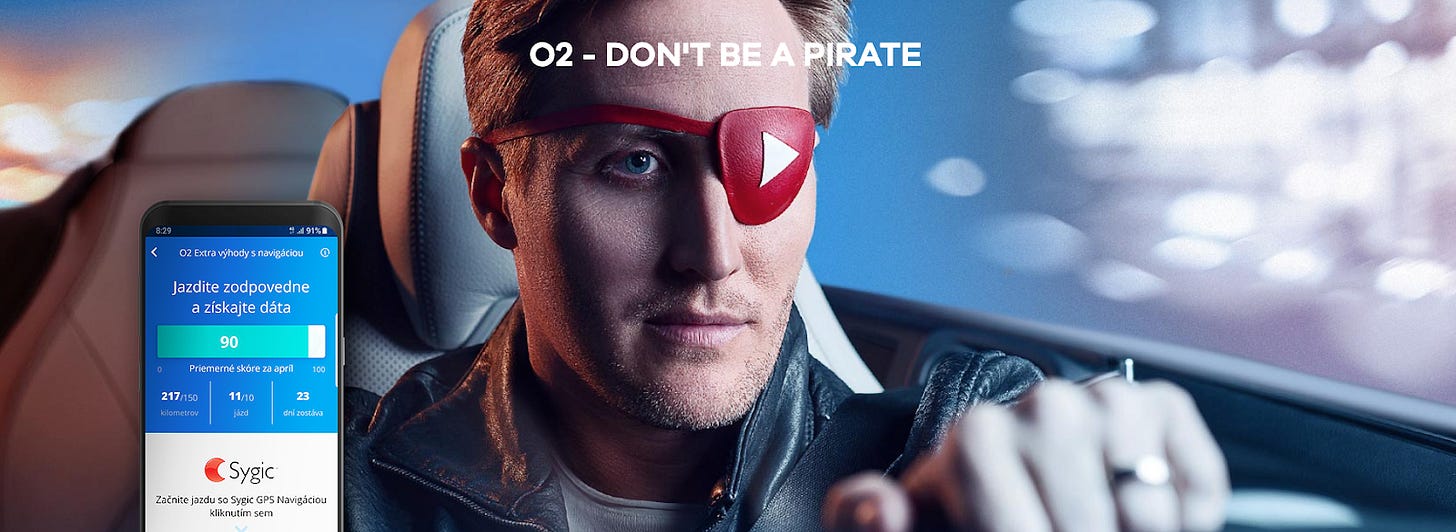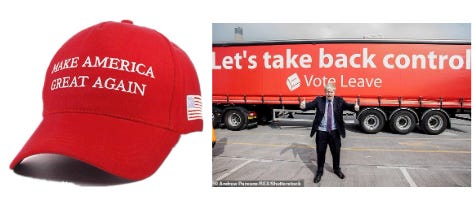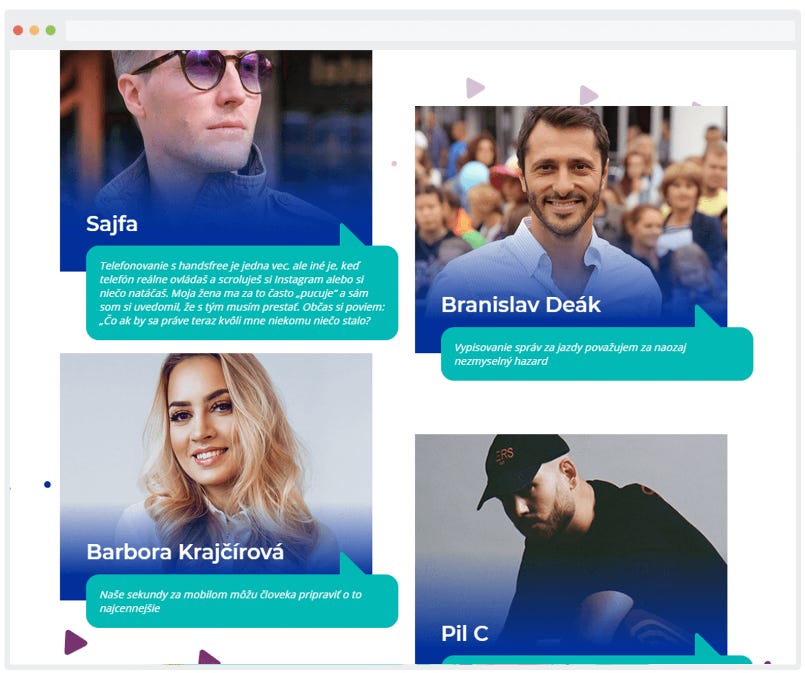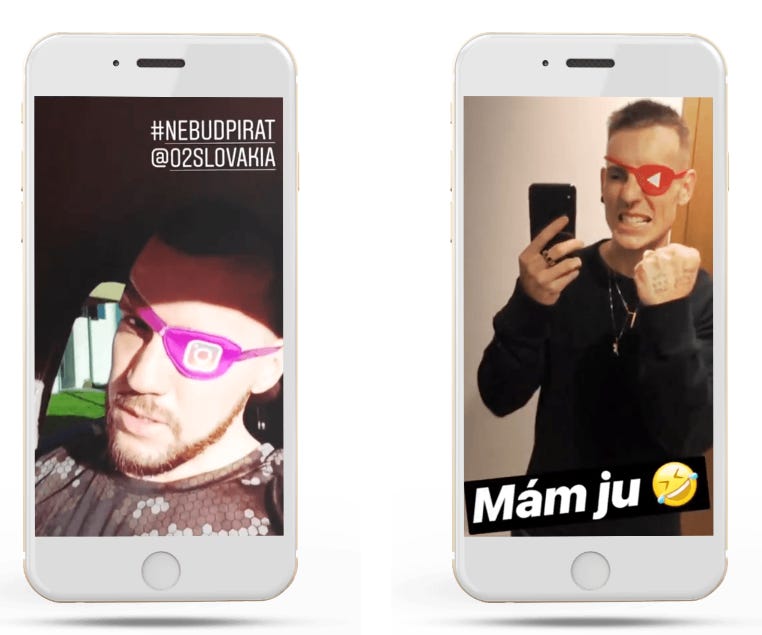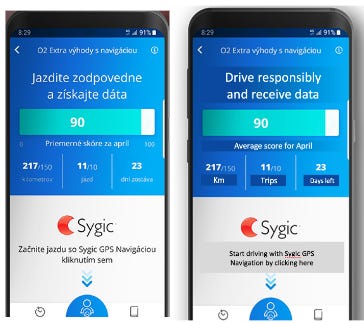[6/6] Ultimate Guide: Model for Identifying and Changing Behavior - How It’s Done Right
I asked myself the question: What exactly needs to be done for a campaign to change behavior, without using this model? In this article, I will explore the answer to this question.
In the previous article, we focused on the area of Determination. It was one of my favorite topics, and as I mentioned, it is an area that we often leave unaddressed and replace with others because the level of determination is very difficult to measure or identify.
For those of you who want to explore the previous sections:
[1/6] Introduction to the ABCD Framework
In this section, we will look at a campaign that was executed many years ago and truly changed behavior, even without knowing this model. It also illustrates how challenging it is to create such a campaign and what is required for a campaign to genuinely influence people’s daily behavior.
So, you have a choice: either use an extreme amount of resources and energy or apply this model.
Let’s conduct a brief analysis of the various parts of the campaign.
For those who would like to support this effort, you can find the entire study here for a symbolic price. It also includes examples and exercises that you won’t find in the article.
How It’s Done Right: The “Don’t be a pirate” Campaign by O2
One of the standout campaigns that genuinely aimed to influence human behavior effectively was O2’s “Nebuď pirát” (Don’t Be a Pirate) campaign, developed in collaboration with Elite Solutions, a full-service advertising agency, and the globally recognized Slovak GPS navigation company Sygic. The campaign was focused on encouraging responsible driving and reducing the use of mobile phones behind the wheel. While I believe that some behavior changes might be temporary, the execution of this campaign provides valuable lessons.
The App, Results, and Behavioral Change Among Slovak Drivers
O2 revamped their Extra benefits app, incorporating features of Sygic’s navigation to reward drivers for responsible driving. The results speak for themselves:
The campaign reached over 5.6 million people on social media and generated 380,000 interactions.
It achieved an organic cumulative reach of more than 12 million people.
In the first month, over 30,000 responsible drives were logged, covering 500,000 kilometers.
The campaign earned six awards at the advertising competition Zlatý klinec.
Why the Campaign Likely Worked and Key Takeaways.
Creating a Strong Association
Creating a Strong Association
The campaign was titled “Nebuď pirát” (Don’t Be a Pirate). Any successful brand, campaign, or product must feature distinctive elements that people can easily remember. These elements usually include a combination of a slogan, visual cue, and color.
Pirate metaphor: In Slovak slang, reckless drivers are often called “road pirates”, which made the word “pirate” a fitting and easily understandable choice. The term created a strong association with irresponsible driving behavior.
Pirate eye patch: The campaign used the iconic pirate eye patch as a central visual cue. Why did this work so well?
It was adaptable for both online and physical applications.
Memorable and tied directly to the slogan, creating a clear mental link between the message and the imagery.
The red color symbolized prohibition or danger, a common visual language in road safety.
The campaign also cleverly used the YouTube logo’s style—where the campaign was initially launched—enhancing its relevance for young people, the group most prone to the targeted behavior.
Gamification and Rewards
Incorporating gamification and reward systems into the app turned responsible driving into something engaging rather than just a moral obligation. By providing tangible rewards and making the experience fun, the campaign incentivized drivers to change their behavior, tapping into human psychology.
Multi-Channel Integration
The campaign’s design made it flexible across multiple platforms, especially on social media where younger audiences are most active. By using engaging visuals, rewards, and the pirate metaphor, the campaign managed to grab attention and maintain interest.
The Challenge of Replicating This Success
Although this campaign was well-executed, it’s not easily replicable for just anyone. Several key elements were uniquely tailored to the Slovak context:
Cultural relevance: The “road pirate” term is a well-understood concept in Slovakia, and any campaign that tries to use similar metaphors elsewhere might need significant adjustments to fit the local culture.
Strong collaboration: The partnership with Sygic and use of gamified technology in the app was critical. For companies without similar resources or technical partners, replicating this level of integration would be difficult.
However, the lessons from this campaign—clear associations, gamification, and a multi-platform approach—can inspire many future campaigns seeking to influence behavior meaningfully.
In conclusion, O2’s “Nebuď pirát” campaign successfully blended behavioral science, marketing, and technology, influencing real-world change in driving habits and setting an example of how thoughtful design and execution can lead to impactful results.
Thoughtful Selection of Influencers
Any campaign or company can either greatly benefit or get burned, depending on how wisely they choose influencers to represent their brand. In the case of the “Nebuď pirát” campaign, Elite Solutions employed a smart strategy by selecting a diverse range of influencers who reached the broadest possible audience. They did this in two ways: through official endorsements in the media, like quotes in newspapers, and through authentic support via Instagram stories, which extended their reach even further.
However, from practical experience, smaller and medium-sized businesses should be more cautious when choosing influencers. Rather than casting a wide net, they should focus on one major influencer or a few micro-influencers within a specific category that aligns with their target audience.
Official Endorsements Example:
Sajfa: The face of the campaign, a radio star, and one of the most popular and likable public figures in Slovakia without major controversies.
Branislav Deák: An actor in the most popular TV show and something of a heartthrob for older women.
Barbora Krajčírová: A TV and radio host, serving as a strong role model for women.
Pil C: One of the most beloved rappers among the youth.
As you can see, each of these influencers not only resonates with their specific demographic but also has a broad reach across various platforms. This strategy ensured that the campaign touched a wide range of audiences, reinforcing its message and appeal across different segments of society.
By choosing influencers carefully and ensuring they align with the brand’s image and values, businesses can maximize the effectiveness and reach of their campaigns, driving both engagement and results.
Authentic Support and Gamification
In addition to official endorsements, a campaign can gain significant traction when other public figures support it authentically, especially through social media platforms like Instagram stories.
This was the case with Ego, a rap legend known for his “bad boy” image, which only strengthened the message of the campaign. When someone with a “bad boy” persona supports something positive, it triggers a subconscious effect in people, making them believe that it must be something important.
Another notable supporter was Exploited, one of Slovakia’s biggest internet stars, adding further credibility and reach to the campaign.
Choose influencers wisely!
The lesson here is that the right influencer choice is crucial. Carefully selecting influencers based on their resonance with your target audience and brand values can make a huge difference. While large campaigns like this can benefit from a diverse group of influencers, smaller businesses should focus on a more targeted approach. Picking either one big influencer or several micro-influencers within a specific niche is often more practical and effective for smaller campaigns.
Addressing the Right Problem
Addressing the right problem is something that’s often talked about but not always followed. This oversight has caused many businesses to fail. The key here is to focus on a specific issue rather than trying to tackle everything at once. In this case, the “Nebuď pirát” campaign focused solely on reducing phone usage while driving, which is a major safety issue and one of the leading causes of accidents. The campaign’s creators likely chose this issue because they knew they could make a real, measurable difference in this area.
Elegant Integration of Online and Physical Campaigns
One of the standout features of the “Nebuď pirát” campaign was how it elegantly integrated both online and offline elements with a digital product. This kind of synergy is rare, but when done correctly, it can greatly enhance the impact of the campaign.
App with Gamification and Rewards
The integration of gamification and rewards into an application is a powerful approach, especially when it comes to driving behavior change through a campaign. Simply creating an app is not enough. As humans, we are naturally self-centered, and as highlighted by the cognitive bias “Reason-Respecting Tendency” by Charlie Munger, if you need people to do something, you must give them a valid reason for it.
One of the most common mistakes that people make is not asking themselves why users should use their product and what they stand to gain from it.
I encountered this situation while advising a startup called MindBank, which aims to create your AI digital twin. Despite having a solid product and impressive conversion rates of over 20% on Facebook ads, the user engagement always dropped to zero after two weeks. When I asked the founder why users should keep using the app, he began listing typical differentiators, like how it’s better than the competition and its unique features. But none of these gave a compelling reason for why I would regularly return to it.
This is understandable. When you’re deeply invested in a project, it’s easy to miss or overlook critical factors, or sometimes you simply don’t want to see them. It happens to everyone.
Every application, behavior change, or intervention must answer one fundamental question in depth: Why would a person actually want to do this?
In the case of the O2 campaign, the reward is data from one of the largest telecom operators. Data in Slovakia is a highly sought-after commodity, as many mobile plans offer limited amounts. This makes for a strong motivation to use the app.
Another element is the gamified aspect of the operator’s app. The app clearly shows what actions a user needs to complete to earn data. It rewards users with data for completing specific tasks, such as driving a certain number of kilometers or a set number of trips per month. These are activities that people would already be doing, and now they are incentivized to avoid illegal and dangerous behaviors, such as using their phone while driving.
It’s quite simple—when a person gets in their car, they open the app, start the navigation through it, and drive. At the end of the drive, everything is calculated and displayed neatly. One area that I didn’t find particularly well-executed is the way the average score is presented. Given that the target audience is the broadest population of drivers, everything should be straightforward and understandable without additional explanation. However, from a few screenshots I saw, I still couldn’t figure out how the score is calculated or why it shows “Average score for April.” I would have expected a more intuitive system, such as a growing percentage instead of some form of average calculation.
Details matter because if people don’t understand how they are rewarded, they will lose interest in using the app.
Another excellent feature is the immediate feedback users receive. After each trip, the score is updated right away, and the user can see their progress. If the user meets the conditions, they are instantly rewarded with data, eliminating the need for waiting, entering contests, or going through lengthy processes to claim their reward, which is often the case in other campaigns. This direct approach increases motivation and simplifies the process, making the user experience much more enjoyable.
In conclusion, gamification and instant rewards, when thoughtfully integrated, create a more engaging experience that keeps users motivated. However, it’s essential to provide clear explanations and intuitive feedback mechanisms so that users can easily understand their progress and remain motivated to continue engaging with the app.
Synergy of Giants
The synergy between major players in a project is one of the key reasons behind its success. Often, companies struggle to change behaviors, make a significant impact, or build great products because they lack essential resources—not just financial, but also time, expertise, creativity, and strategic planning. In many cases, even when a company identifies a genuine problem or area they want to change, they often overlook everything else that is necessary for success—technology, brand credibility, reach, infrastructure, compliance, customer base, and security, among other things.
Let’s take a look at the strong players who successfully tackled these challenges and created a campaign that genuinely impacted people’s behavior:
Elite Solutions: One of the largest and most successful full-service advertising agencies in the country, working with the biggest clients on the market.
O2: One of the largest telecom operators with its own network, physical infrastructure, over a million customers, and a pre-existing app that was simply adapted for the campaign.
Sygic: One of the most successful Slovak startups, recognized globally as a leading provider of GPS navigation systems.
These three companies leveraged their strengths to create a winning campaign. Elite Solutions provided top-tier creative and strategic expertise. O2 brought infrastructure, reach, and technological resources, while Sygic contributed its advanced navigation technology and expertise.
This collaboration exemplifies how the right partnerships can overcome many challenges and lead to the successful implementation of impactful campaigns. However, it’s important to note that when resources and expertise align, things can be executed far more efficiently and elegantly. By understanding these dynamics, you can now create solutions that operate on a higher level than before.
If the way I approach things resonates — or if your product, idea, or strategy feels even slightly “off” — I might be able to help.
Let’s have a quick 20-minute call to find clarity together:
Last Words
In conclusion, these insights are not meant to dictate exactly how you should design your products or structure them. Instead, their purpose is to enhance what you’ve already created, making it more effective, or to spark your creativity in generating new solutions.
Many people believe that creativity is an innate trait possessed by only a select few or that it strikes randomly like inspiration from a muse. While that might hold true for some major breakthroughs, in reality, creativity can be cultivated. It comes from thoroughly understanding your business, analyzing competitors, engaging in exercises like those mentioned earlier, and then connecting all these dots in ways that make the most sense for your specific situation.
Creativity is much like brainstorming—you can’t expect it to appear by locking yourself in a quiet room and thinking hard. It emerges when you expose yourself to new ideas, experiment, and explore.
For example, this article was originally going to be quite different and focused on a slightly different area. However, as I was writing, I realized there were more creative ways to approach it—ways that would better resonate with the audience. So, I reworked the entire piece to make it more engaging and effective.
The takeaway? Stay open to new perspectives and remember that creativity is often built through experience, learning, and experimentation - but first, you need to understand what you’re actually doing.
- Peter
For those who would like to support this effort, you can find the entire study here for a symbolic price. It also includes examples and exercises that you won’t find in the article.




